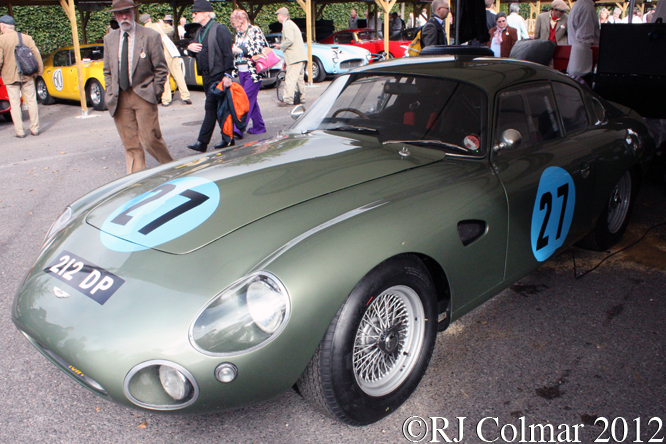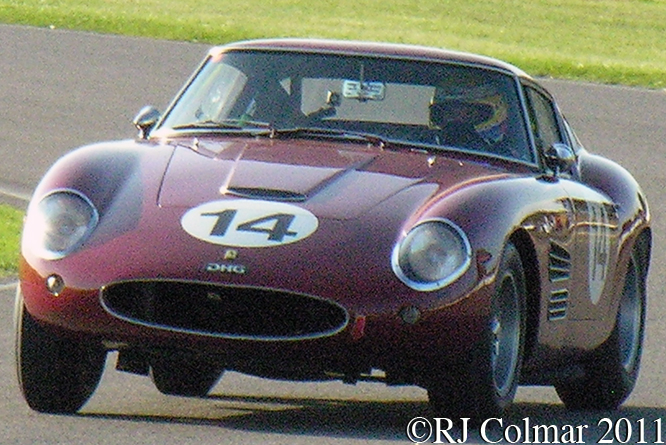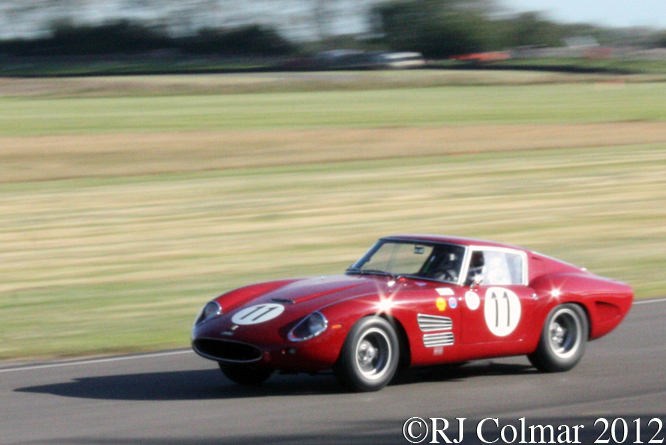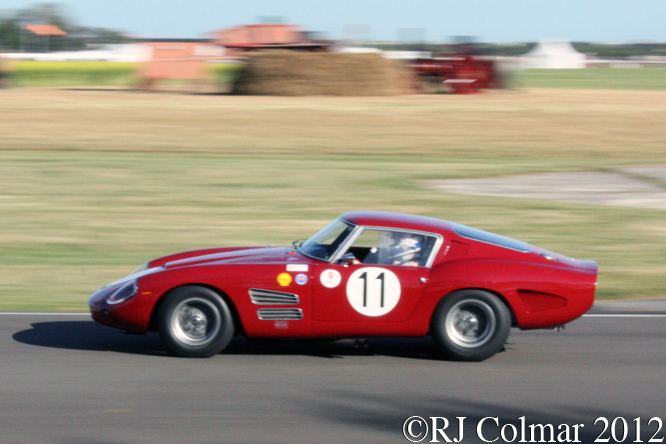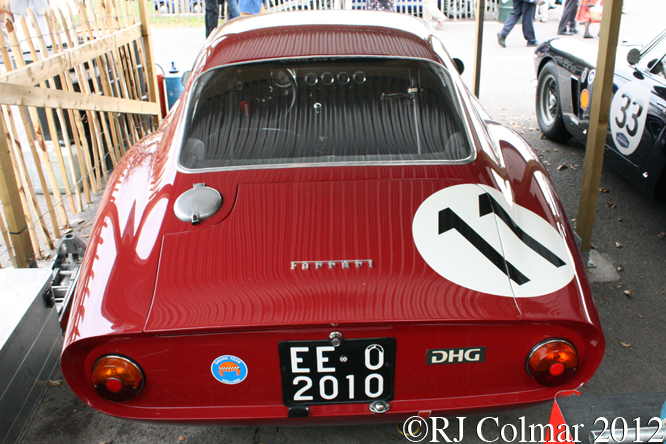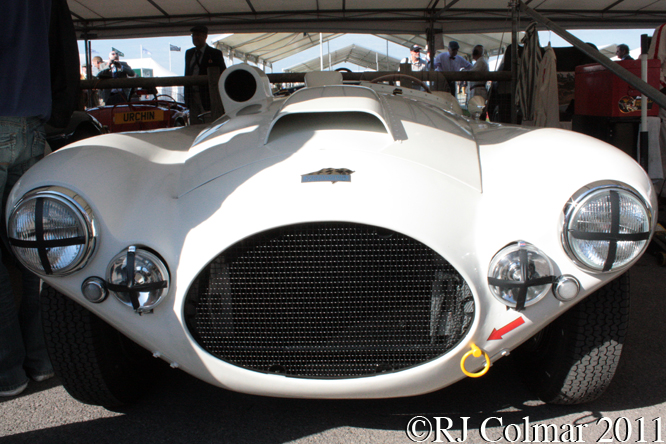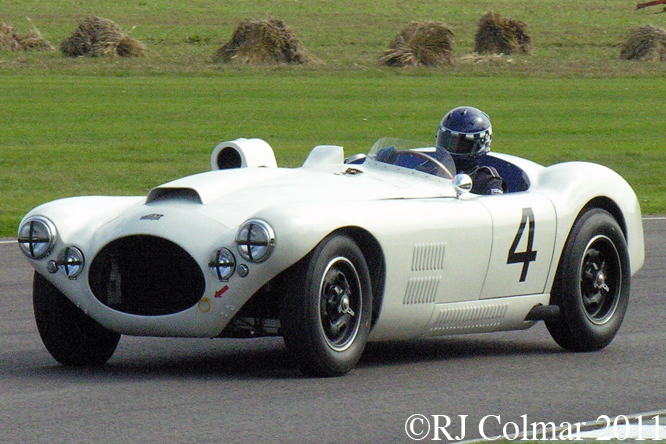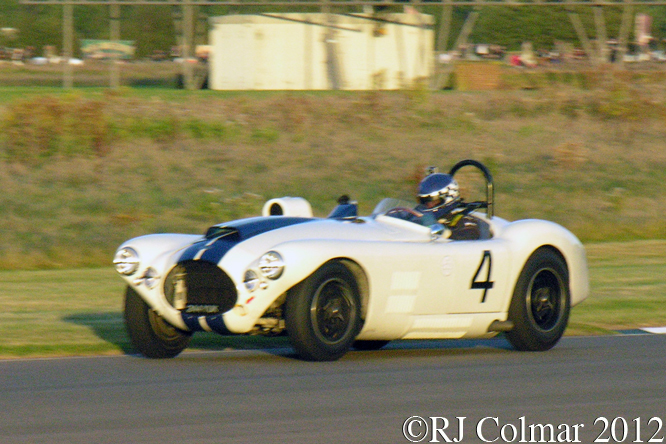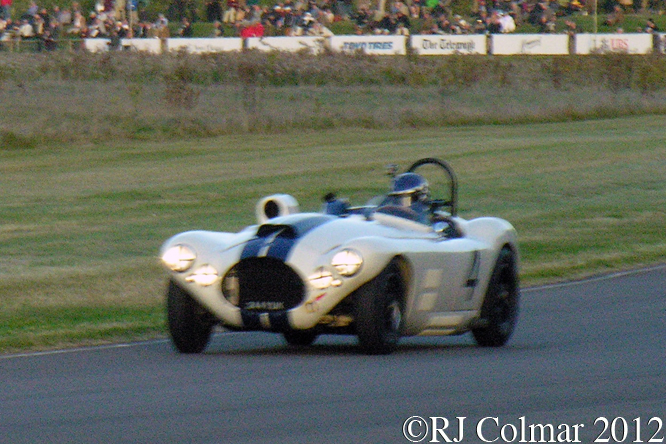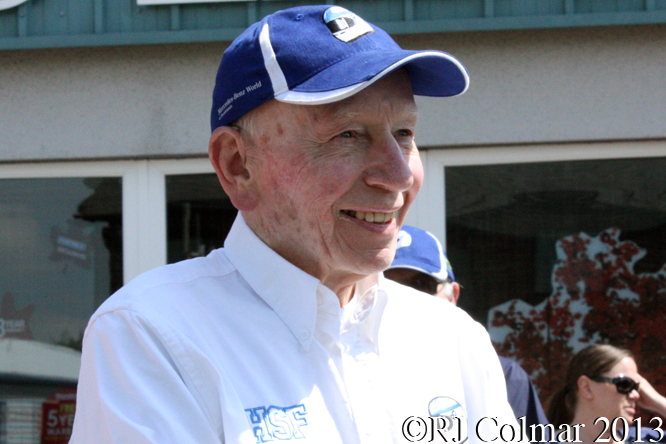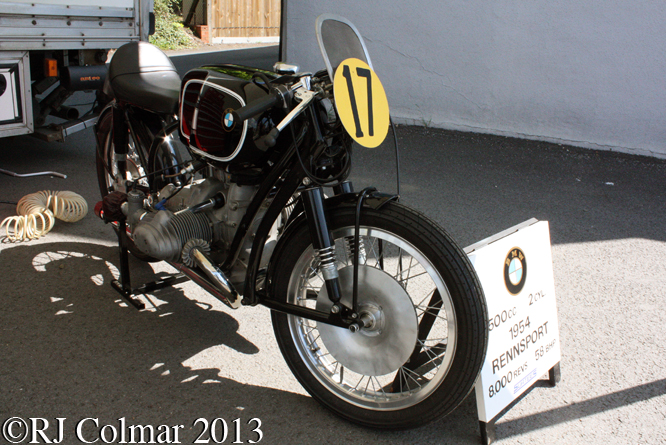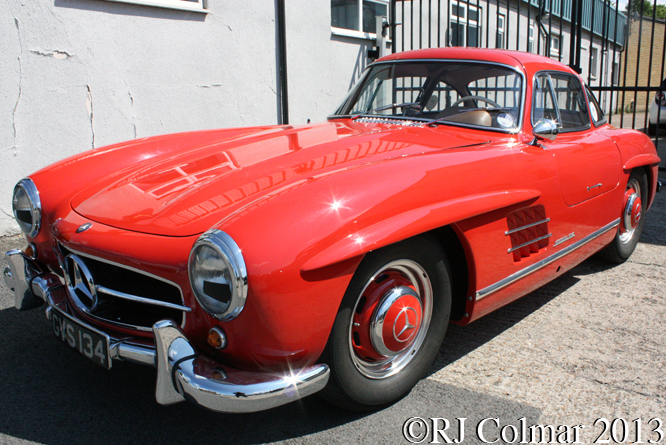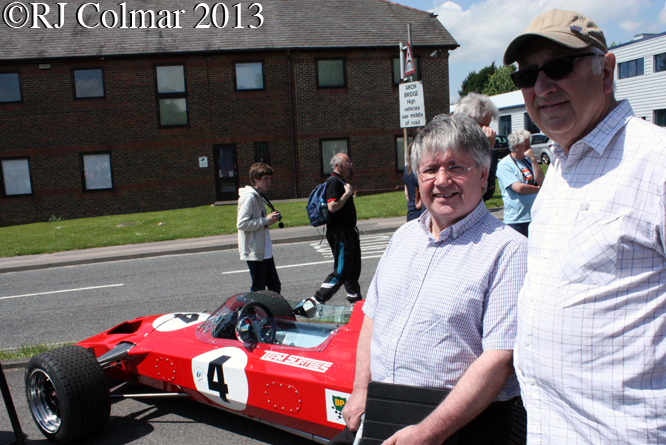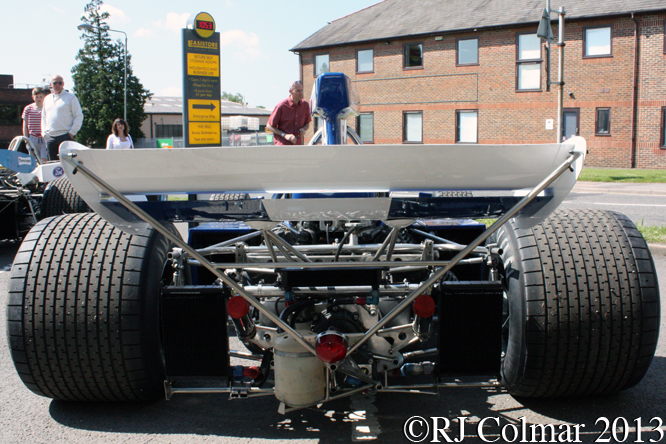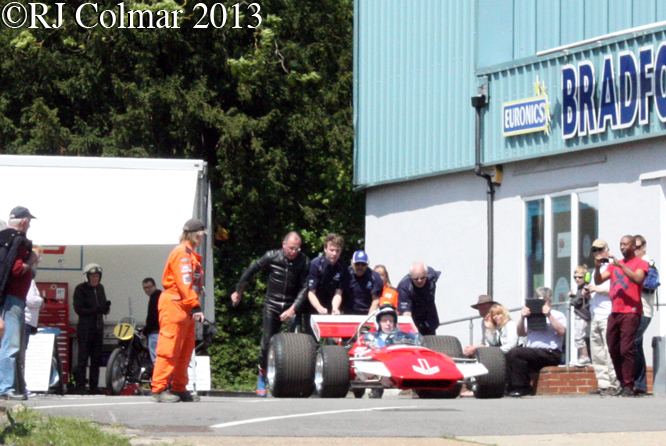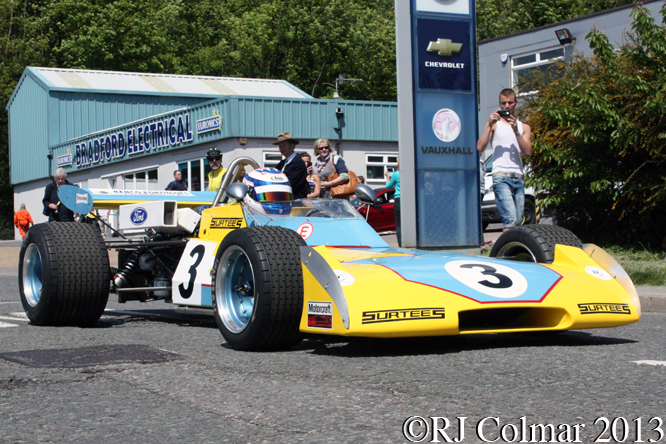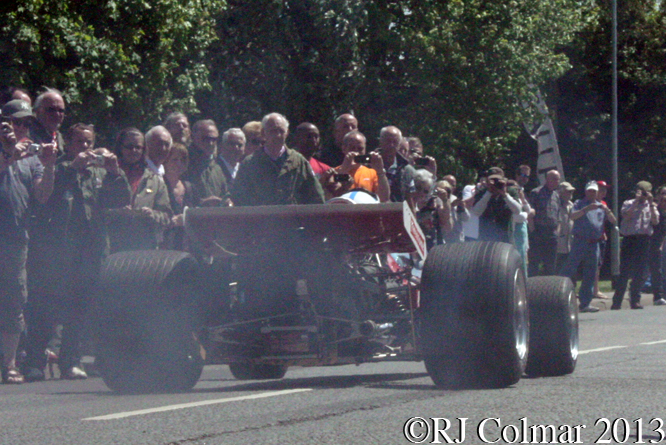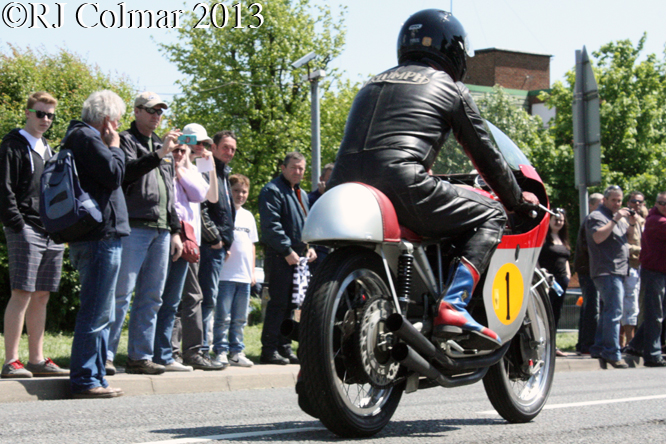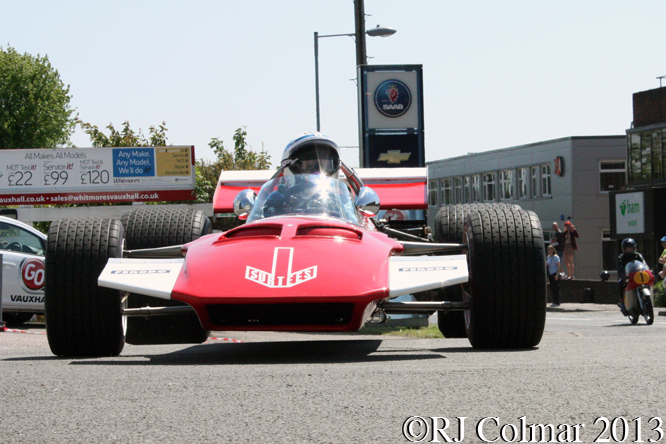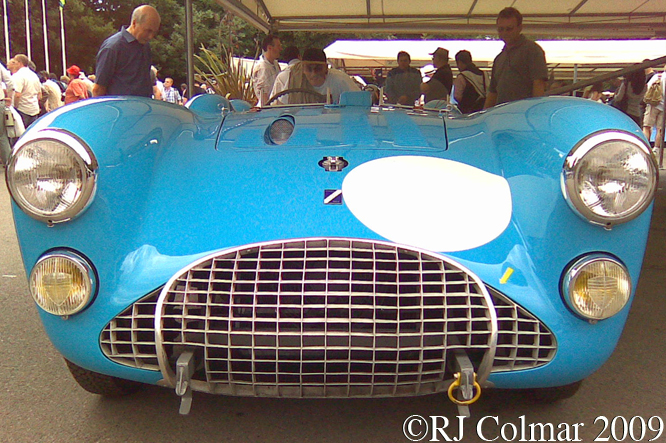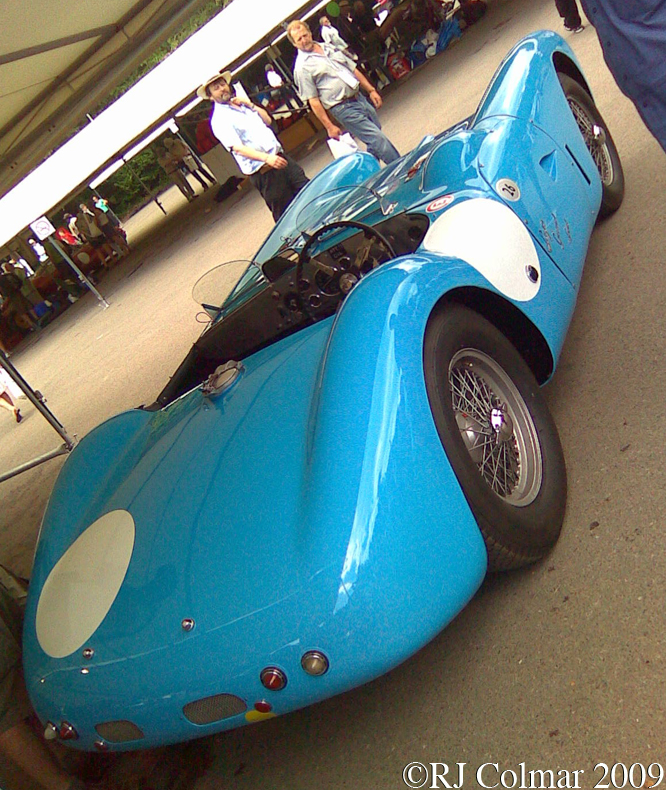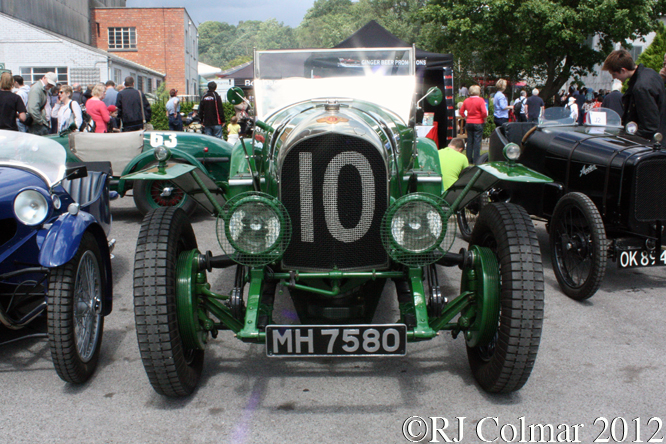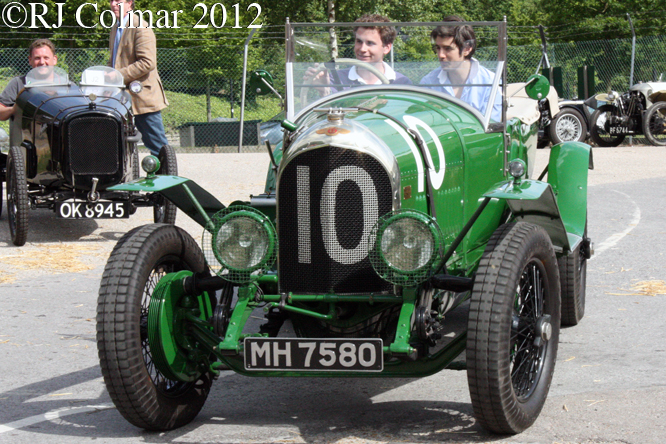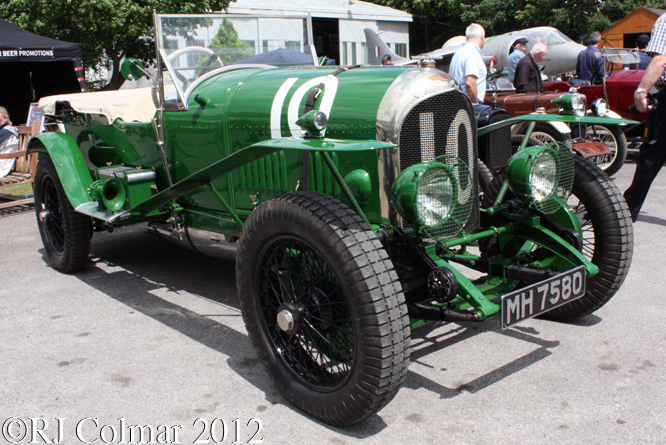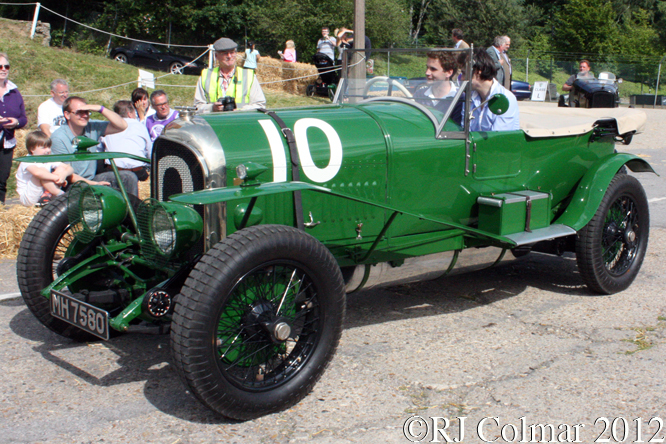The Porsche 936 was the successor to the 908 and 917 models, it was used to win the World Sports Car Championsip in 1976. Three chassis based on many parts from the Porsche 917 parts bin were made.
All three chassis won the Le Mans 24 hour race; chassis #002 in 1976, #001 in 1977, both with a 540 hp 2140 cc / 130 cui turbocharged flat 6 motors and #003 in 1981 with a 600 hp 2649 cc / 161 cui turbocharged flat 6, a design that had started out as the alcohol burning engine used by Danny Ongias in the unraced Interscope Parnelli Indy Car. Remarkably Jacky Ickx co drove each of these 936’s to Victory Lane at Le Mans.
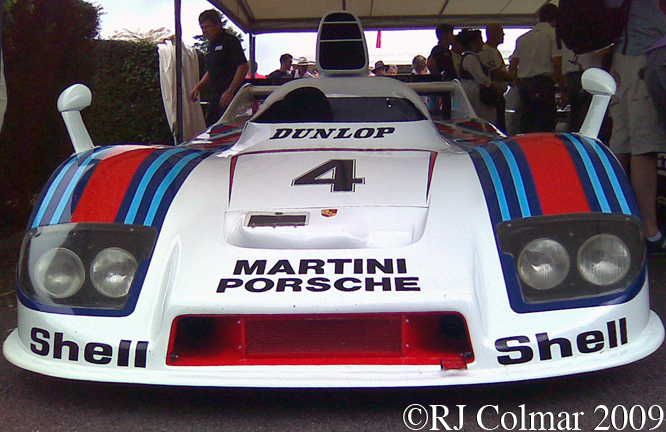
This car represents chassis #001 which was slated to be driven by Juergen Barth and Le Mans rookie Hurley Haywood in the 1977 Le Mans 24 hours, a fuel pump replacement in the 3rd hour dropped #001 down to 42nd place. Around this time Henri Pescarolo’s engine had expired in the sister #002 chassis and Pescarolo’s team mate, Jacky Ickx, was drafted in to join Barth and Haywood.
By his own admission Jacky drove the race of his life through the night and after 19 hours the #001 was in the lead of the race, the three works Renault Alpines dropped out while dominating the race in the Porsche’s absence with engine failures. With 45 mins to go the engine in #001 developed a second misfire, the mechanics shut down the problematic cylinder by taking out the spark plug and blanking the fuel injector.
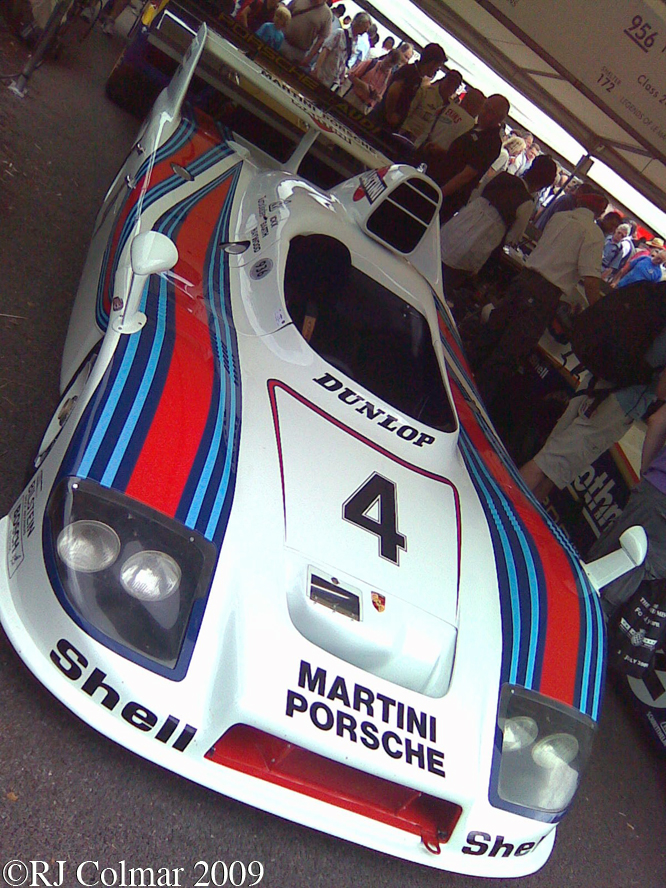
Ten mins before the end of the race Juergen Barth was then sent out with a stop watch taped to the steering wheel and instructed to complete the last two laps, within the necessary percentage of each other, to seal an unlikely victory by 11 laps over the Renault powered Mirage GR8 of Vern Schuppan and Jean Pierre Jarrier.
During the race a wheel balance weight tore off the right front wheel ripped through the wheel arch, and both stalk mounted mirrors were lost. The large air box was primarily used to cool the turbocharged air running through the intercoolers.

The following year Bob Wollek joined Juergen Barth in #001 and when the sister #003 car retired after an accident Jacky Ickx joined Bob and Juergen too however this time they could only finish 2nd to the Alpine Renault of Didier Pironi and Jean-Pierre Jaussaud.
#001’s next two appearances were at the Silverstone 6 hours and Le Mans 24 hours in 1979 it qualified on pole for both of these events, but was classified 10th at Silverstone after an accident which caused Jochen Mass and Brian Redmans retirement from the lead at Silverstone. Bob Wollek and Hurley Haywood retired with engine failure at Le Mans in 1981 as has Jurgen Barth and Reinhold Joest driving #001 at Le Mans in 1976. The cars final appearance as a works car was at the 1981 Le Mans 24 hours where despite starting from 2nd on the grid Jochen Mass, Vern Schuppan and Hurley Haywood could only finish 12th.
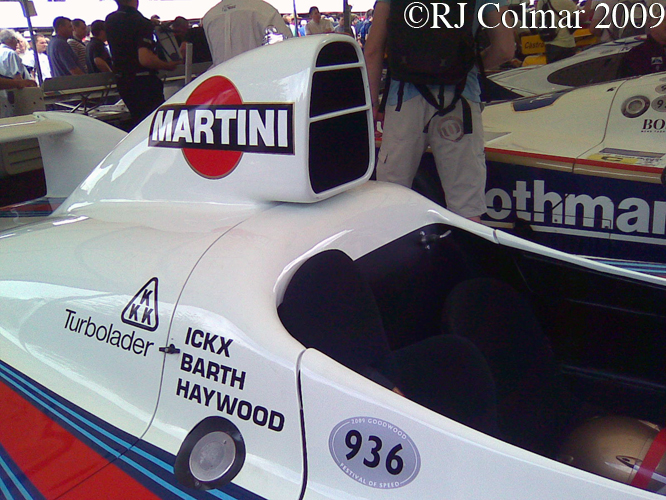
The following linked films document the 1977 Le Mans race; the first shows fabulous in car footage of a lap of Le Mans the second show’s the start and continues into the evening and the third the finish, I afraid most of the commentary is in German except a couple of interviews with Jacky Ickx and Hurley Haywood.
Thanks for joining me on this “Comeback Kid” edition of “Gettin’ a li’l psycho on tyres” I hope you will join me again tomorrow for the 1000th edition of “Gettin’ a li’l psycho on tyres”. Don’t forget to come back now !


